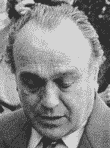Despite running one of New York’s smaller underworld units, Gaetano “Tommy” Lucchese was one of the more successful American Mafia bosses of the post-Prohibition era. Abundant evidence of his business acumen suggests he was among the few mob chiefs who could have succeeded in life without underworld ties. Tommy Lucchese Tommy Lucchese Lucchese, whose surname has been spelled Luchese (which leads to mispronunciations) and Luckese, was a native of Palermo. His family reportedly immigrated to East Harlem around 1911.1 In that community, young Lucchese became affiliated with the Ciro Terranova-dominated 107th Street Mob.2 That affiliation also put him in touch with the Democratic political machine in New York City, which made regular use of street gangs.
Lucchese apparently had great interest in politics and would eventually emerge as one of the more influential gang leaders in the nation. At about the age of 20, Lucchese lost his right index finger in an accident at a Harlem machine shop. Though he actually had four fingers remaining on the hand, he came to share a nickname with a popular pitcher of the day, “Three-Finger Brown.” The use of the nickname for Lucchese has been historically attributed to a wisecracking police officer who happened to be a fan of baseball’s Mordecai Brown and, noting Lucchese’s missing digit, recorded “Three-Finger Brown” as a Lucchese alias. Lucchese appeared to dislike the monicker, but his underworld associates often referred to him as “Brown.” 3 In 1921, Lucchese was convicted of auto theft in Riverhead, Long Island. He quietly did his time – three years in Sing Sing prison – and emerged with a Mafia badge of honor, a prison record. After that auto theft conviction, law enforcement would never again score a victory against Lucchese.4 As he matured, Lucchese moved into leadership roles with Gaetano Reina’s Mafia organization in the Bronx. In July of 1928 he was one of three men arrested for the murder of Louis Cerasulo.
After six days, the charges were dropped. 5 Gagliano Gagliano By the outbreak of the American underworld’s Castellammarese War in 1930, Lucchese and Tom Gagliano were the key men in Reina’s crime family. Outwardly supporting “Joe the Boss” Masseria during the tense moments before the war, Reina’s family secretly opposed Masseria’s reign.6 Masseria caught wind of the betrayal late in 1929. Joe the Boss had Reina killed on Feb. 26, 1930, and handpicked the new head of Reina’s family, Joe Pinzolo.7 Lucchese and Gagliano appear to have cooperated on the assassination of Pinzolo on Sept. 5, 1930. Pinzolo was gunned down in an office he shared with Lucchese at 1457 Broadway. (The two men were partners in a “wine brick” business known as California Dried Fruit Importers, which skirted the Prohibition law. Wine bricks were blocks of crushed grapes that could be reconstituted by setting them in water. Fermentation would then yield wine.) Gagliano replaced Pinzolo as head of the old Reina family. Lucchese became the family’s underboss.
Wanted by police in connection with the Pinzolo murder, Lucchese turned himself in on Sept. 8. A grand jury failed to indict him on the murder charge. (Joe Valachi later testified that “Bobby Doyle” Santucci killed Pinzolo.)8 Schmeling fight weigh-in Schmeling fight weigh-in He was also arrested in July of 1931. The charge was suspicion. Lucchese was nabbed by Cleveland police while he was sitting ringside at the Stribling-Schmeling heavyweight boxing match. His two companions, Charlie Luciano and Joseph Biondo, were also arrested. While the arrest reportedly prevented the men from witnessing Schmeling’s 15-round victory, it presented little other trouble. The three men were quickly released.9 Police questioned Lucchese after the September 1931 murder of Salvatore Maranzano. Some sources believe that Lucchese secretly informed Luciano and Vito Genovese that Maranzano planned to have them killed. That information reportedly led to a preemptive strike by Luciano and Genovese. With Lucchese undeniably in the presence of Luciano at the Cleveland fights just two months before the Maranzano assassination, the story appears to have merit.
10 Lucchese was naturalized an American citizen on Jan. 25, 1943, in Newark, NJ. It took him seven more years to secure a certificate of good conduct from the New York State Parole Board. At that time, his 1921 felony conviction no longer stood as an obstacle to his voting rights.11 Though he was not personally able to cast a ballot in the elections, Lucchese’s backing of Vincent Impellitteri for City Council president in 1945 and for mayor in 1950 is fairly well documented. After accusations of mob involvement in Impellitteri’s career surfaced in the 1950 campaign, Impellitteri severed the relationship.12 Leading a family By the 1950s, Lucchese was outwardly a prospering vice president of a garment factory, Braunell, Ltd., of 50 East Ninth Street.13 Behind the scenes, his corrupting influence was felt in garment workers unions, longshoremen unions and truckers unions as well as in the New York City government and the local entertainment industry. Jimmy Durante Durante Part owner of some downtown hotspots, including the Casino de Paris and the Music Hall, Lucchese was known to be friendly with Jimmy Durante, Frank Sinatra and Dean Martin (Sinatra and Martin were linked to Lucchese through joint investments in the Berkshire Downs Race Track in Massachusetts).
14 A treasury agent of the day reported, “Gaetano Lucchese… has become as dangerous a character — if not more so — than Costello in his heyday.” (Costello apparently lost most of his political connections after his appearance at the Kefauver Committee hearings.)15 Lucchese became family boss after Gagliano’s death of natural causes about 1951-52. (Some sources say Gagliano lived until 1953. A few have argued for 1951. Lucchese seemed to resolve the matter by referring to Gagliano as deceased during a 1952 questioning.)16 John Dioguardi Dioguardi The new boss drew to him such underworld characters as Johnny “Dio” Dioguardi, Vincent Rao and Antonio Corallo, men who possessed both keen business sense and willingness to employ extreme violence. Dio was influential with the Teamsters Union and helped Jimmy Hoffa win election to the union presidency. He appears to have excelled in investment frauds. He created, sought investors for and bankrupted various paper corporations until government investigators caught up with him in the 1960s. Dio’s brutal side came to light in 1956, when he ordered the acid-blinding of crusading journalist Victor Riesel.17 Vincent Rao Rao Rao, who rose to the position of family consigliere and eventually might have become boss if his underworld career had not been interrupted by a stay in federal prison (perjury), had interests in gambling, real estate, labor unions and construction. His forte appears to have been money-laundering. In the mid-50s, he was president of a largely fictitious local of the International Hod Carriers union and inked lucrative contracts with the Five Boroughs Hoisting Co., a firm Rao himself owned.18 Anthony Corallo Corallo Like Dio and Rao, Corallo knew how to handle money. His personal rackets were largely confined to the construction and waste hauling industries.
A 1968 bribery conviction exposed Corallo’s connections to New York’s City Hall and brought down a member of Mayor John Lindsay’s administration. Further corrupt connections to the Tammany Hall political machine run by Carmine DeSapio were revealed a year later.19 The presence of such men allowed Lucchese’s organization to successfully compete with much larger New York families, like the Genovese and Gambino clans. Exposure and decline Lucchese’s success also brought government scrutiny. He was called to testify before the New York State Crime Commission in September of 1952. The commission hearings unearthed the gang boss’s connections to a sitting U.S. attorney, a former New York mayor and a future city police commissioner.20 Immediately after the state hearings, federal authorities moved to have Lucchese denaturalized and deported. He was able to defeat the attempts in court.21 Carlo Gambino Gambino In the early 1960s, mob informer Joe Valachi indicated that Lucchese was one of the five New York members of the U.S. crime syndicate’s ruling Commission. He served alongside Vito Genovese’s acting boss Tommy Eboli, Carlo Gambino, Giuseppe Magliocco and Joseph Bonanno (Bonanno would soon after be thrown out of the Commission for plotting against Lucchese and Gambino). Lucchese, once a rival of Gambino, had developed a close with the crime family boss.
The two men became related by marriage.22 When questioned by the Nassau County district attorney about Valachi-related allegations, Lucchese reportedly said, “Valachi’s crazy. I know nothing about any Cosa Nostra. The only thing I belong to is the Knights of Columbus.”23 Lucchese went into Columbia-Presbyterian Medical Center
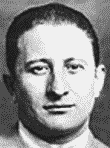
in early August of 1965 with a brain tumor and a heart ailment. A year later, he was still hospitalized and the Mafia’s Commission began dividing up his rackets. LaStella Restaurant arrests LaStella Restaurant arrests A September 1966 raid in a basement dining room at La Stella Restaurant in Queens, NY, netted Carlo Gambino, Mike Miranda, Joe Columbo, Tommy Eboli, Joey Gallo, Aniello Dellacroce and other mafiosi from New York and New Orleans. The apparent purpose of the meeting was to decide the future course of the Lucchese Crime Family. Police dubbed the gathering a “Little Apalachin.”24 “Three-Finger Brown,” aging and frail, returned to his Lido Beach, Long Island, home April 11, 1967.
He died there on July 13 at the age of sixty seven.25 Rao was prevented from taking over the f
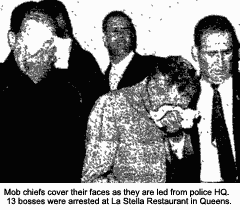
amily, as he was beginning a five-year federal sentence for perjury (another five-year sentence would be added on an additional perjury charge two years later). Antonio “Tony Ducks” Corallo’s election to the top post was delayed, as he was finishing up a prison term for bribing a city water commissioner. Racketeer Carmine Tramunti kept the seat warm as acting boss for Corallo for several years. Corallo, Lucchese’s formal successor, ran the Lucchese Crime Family empire for a decade and a half until the federal Commission trial in 1986. Corallo, already in his 70s, was sentenced to serve 100 years in prison. He died Aug. 23, 2000, at the age of 87.26
Notes
1. “Thomas Luchese, rackets boss called 3-finger Brown, is dead,” New York Times, July 14, 1967, p. 27.
2. While there is no documentation for direct interaction between Terranova and Lucchese, the two men had mutual underworld associates and prowled the same East Harlem territory: Reid, Ed, The Shame of New York, New York: Random House, 1953, p. 43, 58.
3. The story of the nickname is found in Raab, Selwyn, Five Families, New York: Thomas Dunne Books, 2006, p. 102; and in “Luchese presents study in contrasts,” New York Times, Oct. 11, 1952, p. 26. Lucchese’s dislike of the name was noted in Maas, Peter, The Valachi Papers, New York: G.P. Putnam’s Sons, 1968, p. 95; and in Lucchese’s testimony before a New York State Crime Commission: “Analysis of his testimony before board unfolds unsavory record,” New York Times, Nov. 22, 1952, p. 1. (He told the commission he would spit in the face of any man who called him “Three-Finger Brown.”)
4. “Luchese presents study in contrasts;” “Thomas Luchese, rackets boss called 3-finger Brown, is dead;” Reid, The Shame of New York, p. 56-57.
5. “Luchese presents a study in contrasts.”
6. Bonanno, Joseph with Sergio Lalli, A Man of Honor, New York: Simon & Schuster, 1983, p. 84, 106.
7. Bonanno, A Man of Honor, p. 106; Maas, The Valachi Papers, p. 86-87; “Wealthy ice dealer slain in doorway,” New York Times, Feb. 27, 1930, p. 3.
8. Maas, The Valachi Papers, p. 87; Bonanno, A Man of Honor, p. 116; “Luchese presents a study in contrasts.”
9. “Luchese presents a study in contrasts.”
10. “Luchese presents a study in contrasts;” Bonanno, A Man of Honor, p. 139; “Thomas Luchese, rackets boss called 3-finger Brown, is dead.”
11. “Analysis of his testimony before board unfolds unsavory record.”
12. “Luchese presents a study in contrasts;” Reid, The Shame of New York.
13. “Luchese presents a study in contrasts;” places the manufacturing plant at this address and notes that display showrooms were located at 262 West 38th Street. Reid, The Shame of New York, p. 57, places the company at 225 West 37th Street.
14. Gage, Nicholas, “Ex-aides say Justice Dept. rejected a Sinatra inquiry,” New York Times, Wed., April 14, 1976, p. 81.
15. “Thomas Luchese, rackets boss called 3-finger Brown, is dead.”
16. “Analysis of his testimony before board unfolds unsavory record;” Bonanno, A Man of Honor, p. 160, indicates that Gagliano remained boss until 1953 when Lucchese took over.
17. Raskin, A.H., “Thug hurls acid on labor writer,” New York Times, April 6, 1956, p. 1; Levy, Stanley, “Rackets and crime linked in Riesel case,” New York Times, Sept. 2, 1956, p. 10; “Threats delay acid case trial,” Binghamton NY Press, May 20, 1957, p. 14.
18. Riesel, Victor, “Phantom hod boss,” Oakland Tribune, Oct. 5, 1959, p. 15.
19. Amateau, Albert, “Carmine DeSapio, Village native son who ran Tammany,” The Villager, Vol. 74 No. 14, Aug. 4-10, 2004.
20. “Thomas Luchese, rackets boss called 3-finger Brown, is dead,” indicates that Lucchese was found to be a friend of Myles J. Lane, U.S. attorney for the Southern District of New York; future Police Commissioner Thomas J. Murphy; and former Mayor Vincent Impelliteri. “Analysis of his testimony before board unfolds unsavory record.”
21. “Thomas Luchese, rackets boss called 3-finger Brown, is dead.”
22. Bonanno, A Man of Honor, p. 121.
23. “Thomas Luchese, rackets boss called 3-finger Brown, is dead.”
24.”Mafia chiefs seized,” Syracuse NY Herald-Journal, Fri., Sept. 23, 1966.
25. “Thomas Luchese, rackets boss called 3-finger Brown, is dead;” “Luchese, Cosa Nostra boss, dead,” Syracuse NY Post-Standard, July 14, 1967, p. 1.
26. Feuer, Alan, “Anthony Corallo, mob boss, dies in federal prison at 87,” New York Times, Sept. 1, 2000.

 amily, as he was beginning a five-year federal sentence for perjury (another five-year sentence would be added on an additional perjury charge two years later). Antonio “Tony Ducks” Corallo’s election to the top post was delayed, as he was finishing up a prison term for bribing a city water commissioner. Racketeer Carmine Tramunti kept the seat warm as acting boss for Corallo for several years. Corallo, Lucchese’s formal successor, ran the Lucchese Crime Family empire for a decade and a half until the federal Commission trial in 1986. Corallo, already in his 70s, was sentenced to serve 100 years in prison. He died Aug. 23, 2000, at the age of 87.26
amily, as he was beginning a five-year federal sentence for perjury (another five-year sentence would be added on an additional perjury charge two years later). Antonio “Tony Ducks” Corallo’s election to the top post was delayed, as he was finishing up a prison term for bribing a city water commissioner. Racketeer Carmine Tramunti kept the seat warm as acting boss for Corallo for several years. Corallo, Lucchese’s formal successor, ran the Lucchese Crime Family empire for a decade and a half until the federal Commission trial in 1986. Corallo, already in his 70s, was sentenced to serve 100 years in prison. He died Aug. 23, 2000, at the age of 87.26
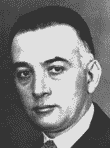
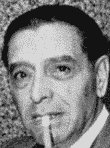
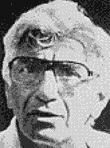 Profaci-Colombo family in New York. Henry Tameleo (July 12, 1901, to August 1985), who transferred into New England from New York City’s Bonanno family, served as his Providence underboss. In the mid-1960s, the Patriarca organizations put down underworld challenges from William Marfeo and Rocco DiSeglio. Gennaro Angiulo 1969 – Gennaro J. Angiulo (March 20, 1919, to Aug. 29, 2009). With Patriarca constantly hounded by authorities, Angiulo – who had worked gambling rackets as a mob affiliate during the 1950s and early 1960s – allegedly took a leadership role in the Boston wing of the New England family. While never a part of the Providence inner circle, he allegedly functioned as underboss in Boston through Patriarca’s death in 1984. 1984 – William Grasso (Jan. 6, 1927, to June 16, 1989). Patriarca died of a heart attack on July 7, 1984. Underboss Angiulo was reportedly not considered boss material.
Profaci-Colombo family in New York. Henry Tameleo (July 12, 1901, to August 1985), who transferred into New England from New York City’s Bonanno family, served as his Providence underboss. In the mid-1960s, the Patriarca organizations put down underworld challenges from William Marfeo and Rocco DiSeglio. Gennaro Angiulo 1969 – Gennaro J. Angiulo (March 20, 1919, to Aug. 29, 2009). With Patriarca constantly hounded by authorities, Angiulo – who had worked gambling rackets as a mob affiliate during the 1950s and early 1960s – allegedly took a leadership role in the Boston wing of the New England family. While never a part of the Providence inner circle, he allegedly functioned as underboss in Boston through Patriarca’s death in 1984. 1984 – William Grasso (Jan. 6, 1927, to June 16, 1989). Patriarca died of a heart attack on July 7, 1984. Underboss Angiulo was reportedly not considered boss material.